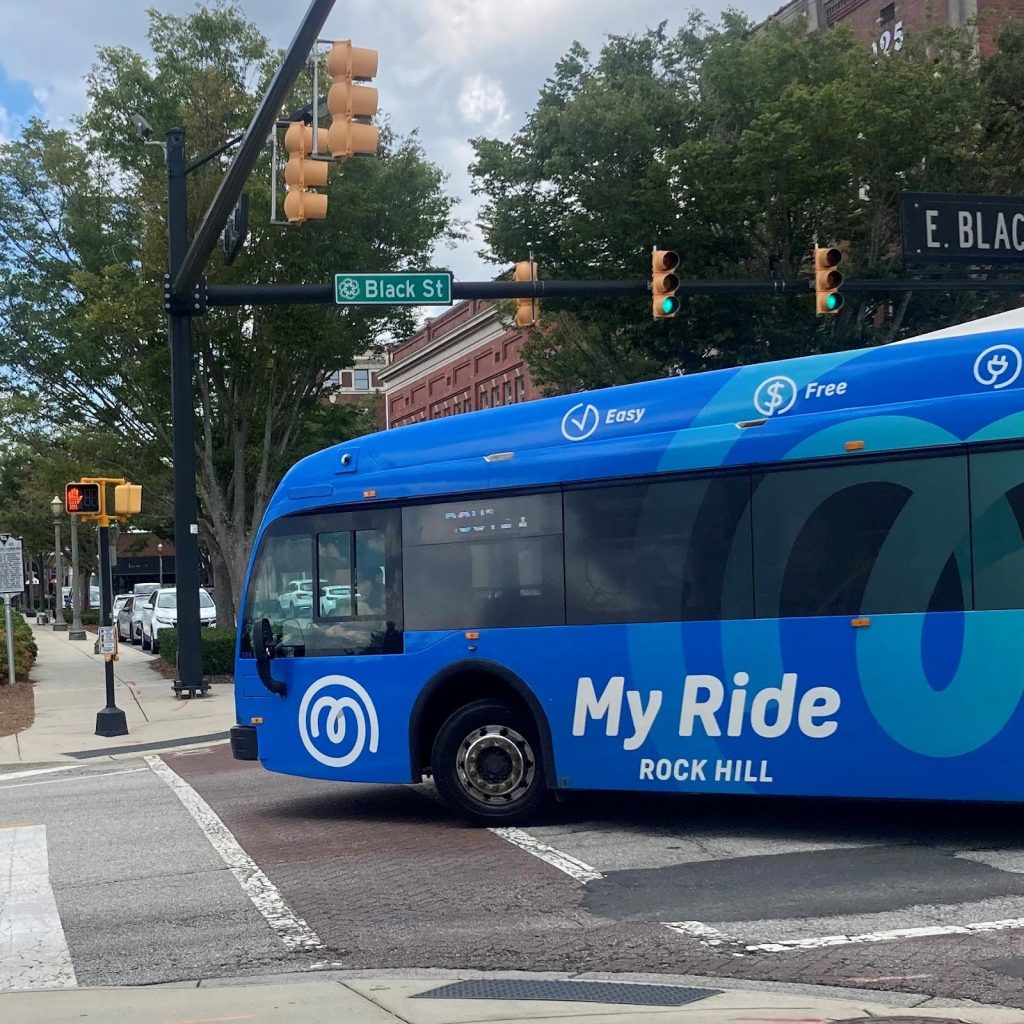Rock Hill, South Carolina, USA
Public Transportation Steered By Data
Project Type:
Community Engagement, Environment, Health and Wellbeing, Transportation
At a Glance
The percentage of residents who report using public transportation has more than doubled since their fare-free, all-electric public buses began in 2019.
More than 700 alumni of a 10-week civics course provided to residents by the City.
Increasing tree canopy by planting three trees for every one tree the City cuts down.
Rock Hill, SC, tried public transportation in the 1990s. It wasn’t a roaring success; people didn’t know about it and ridership was low. However, in 2015 a Winthrop University survey found that 80% of respondents identified transportation as a top need. With that data point, Mayor John Gettys knew it was time to give public transportation another go.
Data was a guiding force from the start. The City paired the survey with qualitative data from focus groups that also said fixed-route transit would minimize barriers and provide opportunities to residents. With the need established, choosing routes and schedules were the next items on the agenda. Again, the City leaned on resident feedback, partnering with United Way to hold interest meetings. At the same time, regional planning associations used census data and maps to plot routes that would most benefit residents who needed it most. For instance, they didn’t just look at neighborhood density, they looked at where residents without cars lived, and they made sure that routes passed parks, shopping centers, health care facilities and other places residents recommended.

“The reason we accomplish big things is that we use data to drive decisions, something the City has done consistently over the last 20 years. I think being strategic and utilizing data to solve challenges attracts good representatives who want to come in and do big things, good things for our community.”
“Basing decisions on data can minimize the vitriol of partisan politics, it’s an antidote to a lot of the divide we see in our country today.”
My Ride not only improves accessibility, it’s making a more sustainable Rock Hill. The fleet of 10 buses are all electric and produced in South Carolina. The buses reduced about 337 metric tons of CO2-equivalent emissions compared to diesel buses in just their first year, they’re also quieter for riders and cost less to operate.
Data guided My Ride’s funding decisions as well. Evidence showed that it was cost-prohibitive to collect fares, and city leadership knew how much the buses contributed to accessibility. Thus, the buses are fare-free. Federal Transit Authority (FTA) funds help meet the majority of the costs, the rest is covered by the City and partner organizations.
As My Ride’s success grows, so too do the City’s ambitious goals for the bus system. When the program started, their ridership goal was 4,100 passenger trips per week—a goal they met in less than two months. Despite the plunge in ridership due to the pandemic, ridership has bounced back. In FY23, My Ride’s monthly ridership goal was 16,400. They averaged 20,839 passenger trips per month. And they did all of those rides with only three customer complaints the whole year.
This isn’t the end of the line for My Ride. The four, hour-long routes already serve about two-thirds of city residents, and the City is constantly collecting feedback and setting goals for improvement. For example, in 2023 My Ride began to serve additional areas on the existing routes and improved system efficiency.